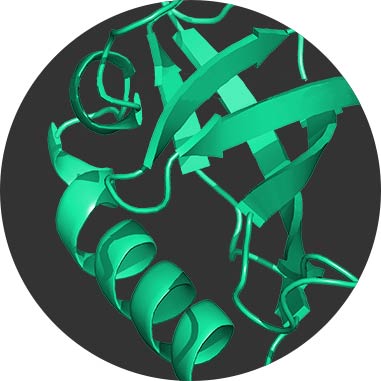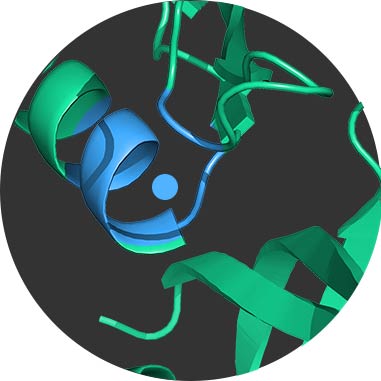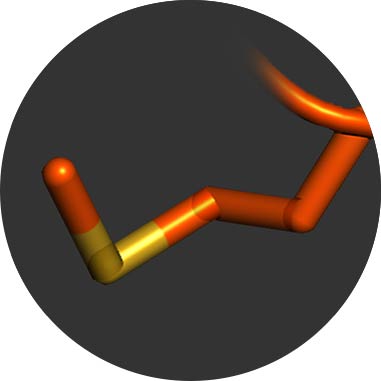MASTER REGULATORS OF GENE EXPRESSION
A transcription factor reads the genome and orchestrates its expression by integrating accessory proteins at specific regions of DNA.
Transcription factors (TFs) have long been the aspirational targets of drug developers, based on their central role in cancer and other diseases.
What are TFs
TFs are DNA-binding proteins that can activate or repress DNA transcription and, therefore control gene expression.
Why they matter
As drug targets, TFs differ from many other target classes by offering a powerful blend of exquisite potency with highly selective cellular activity.
THE LARGEST PROTEIN FAMILY:

TF MUTATIONS CAUSE:


Despite a broad consensus around their role in disease and vast therapeutic potential, transcription factors have been elusive targets for drug discovery.

Setting the stage
Flare Therapeutics’ scientific co-founders have decades of experience understanding the biology and structure of TFs. Their seminal work includes elucidating molecular mechanisms for targeting TFs with ligands and structure-function relationships of TF complexes.
The spark ignites
As early members of the FlareTx team were building a company focused on transcription factors, they were inspired by the work of Dr. Fraydoon Rastinejad of Oxford University on the HIF2A transcription factor. Now one of FlareTx’s scientific co-founders, Dr. Rastinejad had elucidated the structural basis for bidirectional tuning of gene regulation by HIF2A using small molecules.

A transcription factor reads the genome and orchestrates its expression by integrating accessory proteins at specific regions of DNA.
A transcription factor reads the genome and orchestrates its expression by integrating accessory proteins at specific regions of DNA.
Significant efforts have been made to target transcription factors because of their central role in disease. However, these efforts have focused on individual transcription factor domains in isolation. This reductionist framework obscures the most crucial aspects of TF biochemistry.
Precise gene control requires cooperative communication and allosteric interaction among the elements of the transcription machinery. Taking an approach that reflects the cooperative nature of TFs reveals new insights and therapeutic opportunities.
Precise gene control requires cooperative communication and allosteric interaction among the elements of the transcription machinery. Taking an approach that reflects the cooperative nature of TFs reveals new insights and therapeutic opportunities.
This links to an external website.